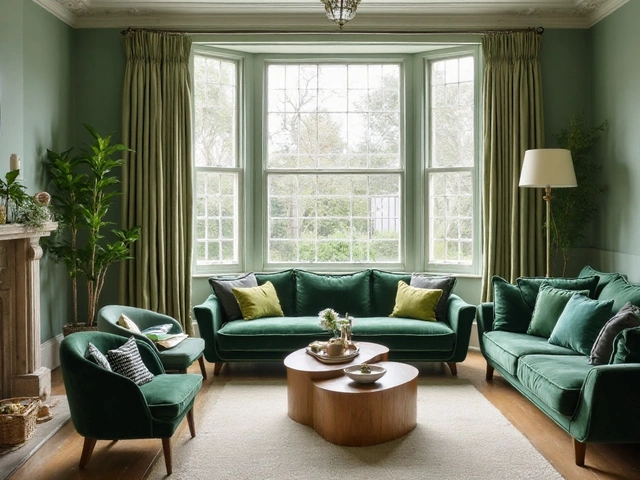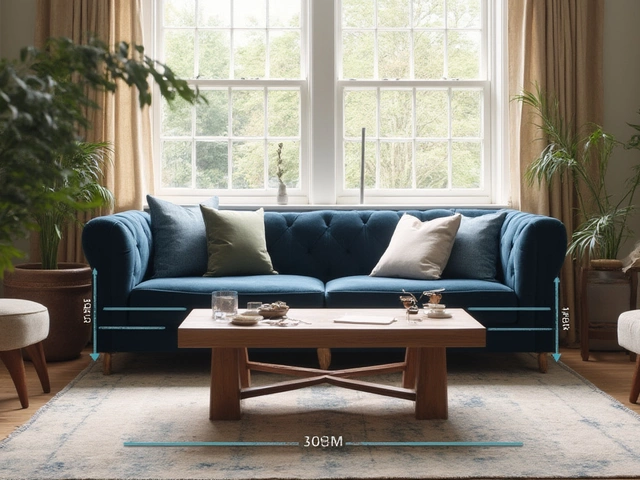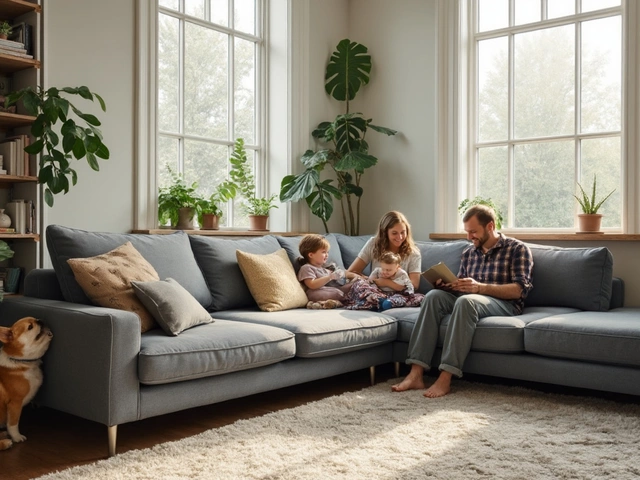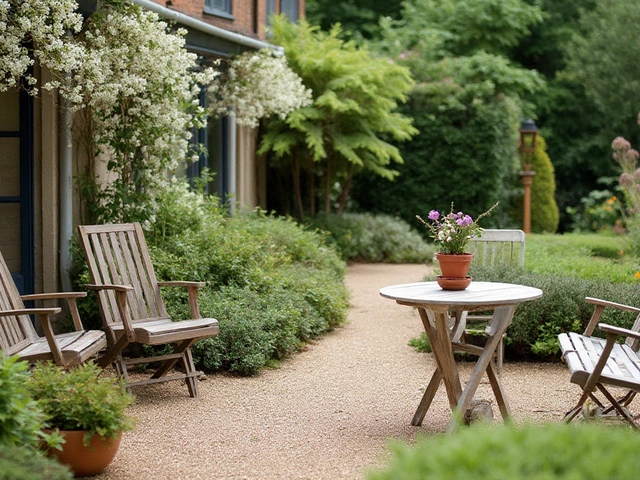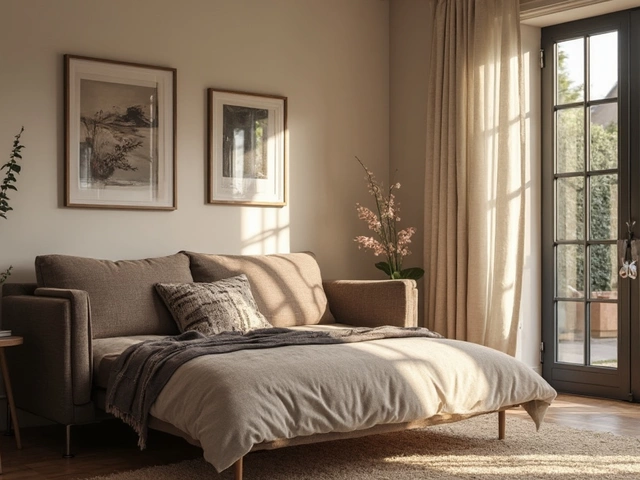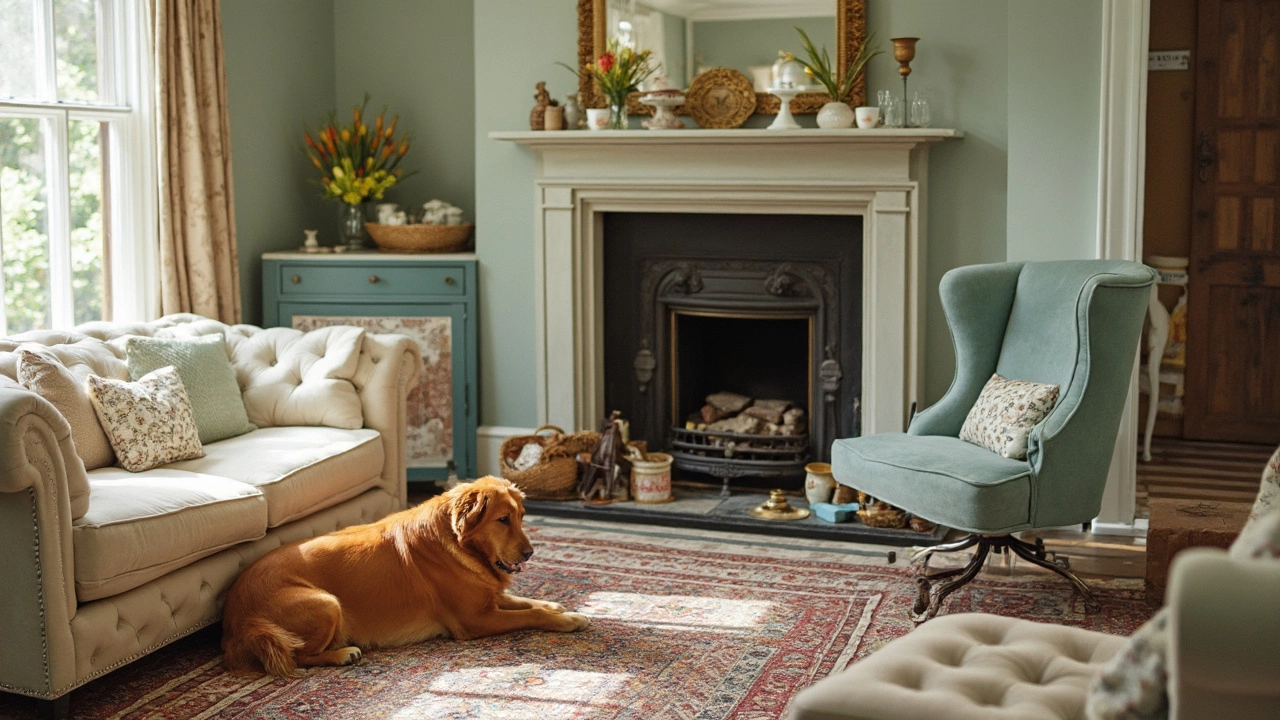 18
Feb,2025
18
Feb,2025
When it comes to picking a sofa, color isn't just about aesthetics; it's about setting the mood in your living space. So, should your sofa be lighter or darker than the walls? It's a conundrum that affects everything from perceived room size to the overall feel of the room. Let's dig into the pros and cons to help you make an informed decision for your home.
First up, lighter sofas can make a room feel airy and spacious. They often work wonders in smaller spaces where you want to avoid a cramped atmosphere. But don't let their lightness fool you—they require some maintenance, especially if you've got kids or pets.
On the flip side, darker sofas lend an air of sophistication and can make a large room feel more intimate. They're also quite forgiving when it comes to hiding stains and wear. This makes them a popular choice for high-traffic areas or homes with little ones running around.
- Why Sofa Color Matters
- Pros of a Lighter Sofa
- Pros of a Darker Sofa
- Balancing Act: Light and Dark
- Personal Style and Practicality
Why Sofa Color Matters
The color of your sofa isn't just a trivial choice—it's something that can shape the entire vibe of your room. Why should you care? Well, it impacts everything from the mood to the perceived size of the space. It's crazy how much these choices can affect your daily comfort.
Interior design principles suggest that color can influence how we feel. Brighter shades often bring energy and positivity, while darker tones can create a cozy, intimate environment. So when you're sitting on your sofa binge-watching your favorite series, the color's effect is subtle but there.
Room Dynamics
Consider room size and lighting, as they play significant roles in how color is perceived. Light colors typically make spaces feel larger, which is great for smaller areas. They can reflect more light, enhancing the openness of your room. Meanwhile, darker hues can absorb light and make a large space feel more compact and comfortable.
Matching Wall Colors
Should your sofa color match or contrast with your wall colors? Both options are valid, but they create different effects. Matching tones lead to a seamless, unified look. Contrasting colors, on the other hand, can make a bold style statement. Room context like sun exposure and whether the room is north or south-facing can affect how colors appear, too.
Personal Style and Function
Functionality is another critical aspect. Do you use the living room often? If so, a darker sofa might make sense because it hides wear better. Are you going for a modern, minimalist look? Then maybe a neutral or lighter color is more your style. Your home is a reflection of you, so let your personality guide you a bit.
Ultimately, choosing the right sofa color is about balancing aesthetics with practical needs. It's an art and a science, culminating in a comfortable space where you can truly unwind.
Pros of a Lighter Sofa
A lighter sofa brings in a fresh vibe to your living space, transforming it into a more open and inviting area. If you often find your rooms feeling tight or cramped, a lighter sofa might just be the solution you need. Let's break down some key advantages.
Enhances Room Brightness
One of the standout features of a lighter sofa color is its ability to reflect more light. This means your room feels brighter and may even seem larger. This effect is particularly beneficial in smaller spaces or rooms with minimal natural light. Who doesn't appreciate a little extra brightness?
Neutral and Versatile
Lighter sofas often come in neutral shades like beige, cream, or light gray, which can blend seamlessly with various wall colors. This makes them incredibly versatile, accommodating changes in your decor style over time without clashing. It's like having a blank canvas that complements whatever you choose to pair with it.
Pairs with Dark Floors
Got dark hardwood or tile floors? A lighter sofa can create a striking contrast that draws the eye, adding depth and interest to the room. This interaction often leads to a more balanced and visually appealing space.
Aids in Visual Space Expansion
Light-colored sofas can visually expand the space. Opting for one can be a smart tactic if you're working with compact areas or awkwardly shaped rooms. By tricking the eye, these sofas create the illusion of a less cluttered and more spacious environment.
Combines Well with Patterns
If you love a bit of flair, lighter sofas can be paired effortlessly with patterned rugs, vibrant throw pillows, or bold artwork. Their subtlety allows other elements in the room to shine without overwhelming the space.
| Room Size | Light Sofa Effect |
|---|---|
| Small | Appears Larger |
| Medium | Feels Airy |
| Large | Open and Bright |
Remember, while lighter sofas have plenty of advantages, they might demand a bit more care to keep them looking pristine. Regular cleaning and the occasional deep clean can help maintain their appearance and your peace of mind.
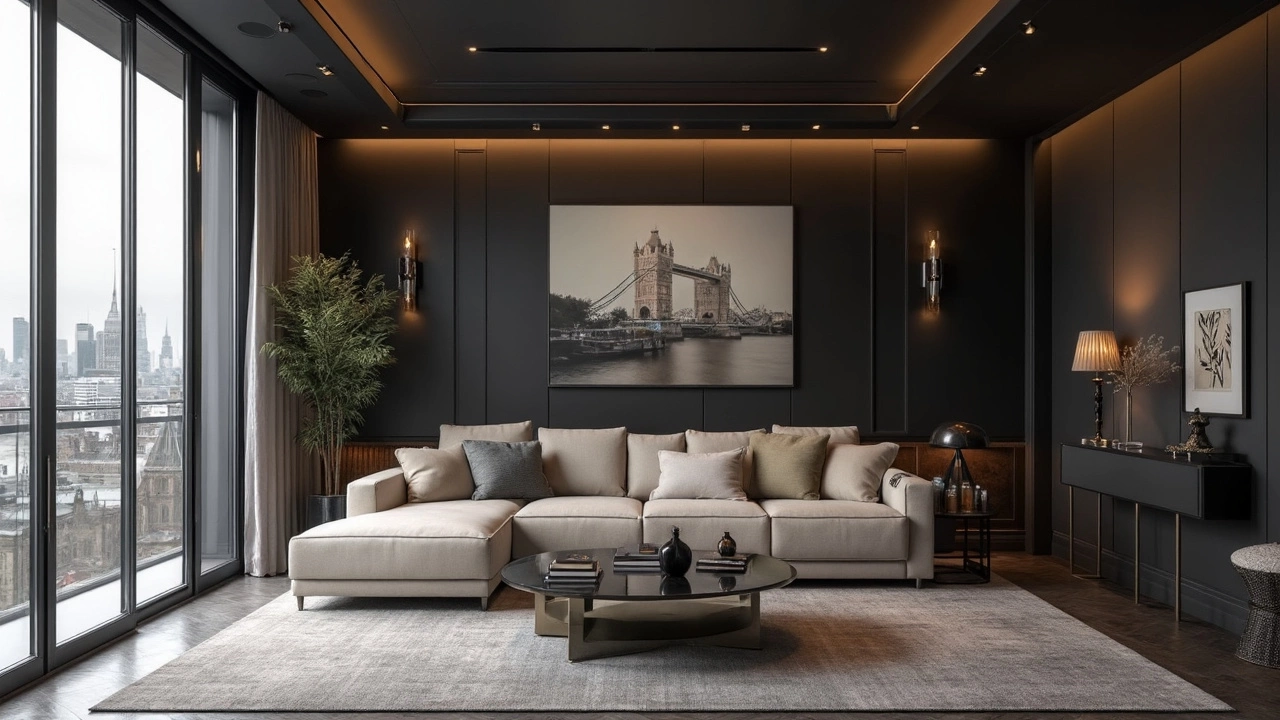
Pros of a Darker Sofa
Choosing a darker sofa color brings a touch of class to any living room while serving practical purposes. One major advantage is how it hides stains—super handy if you've got kids, pets, or frequent late-night snack sessions. Let's be real; spills and accidents happen. A dark sofa doesn't show every little mishap, keeping your space looking tidy without constant stress.
Another benefit is that darker sofas create an intimate vibe. If you're aiming for a cozy, snug look in a large room, a dark sofa can anchor the space, making it feel more personal and inviting. Think of it like this: a dark sofa acts as a visual anchor, drawing attention and providing a focal point amidst lighter elements, which balances the room's aesthetics.
Styling Flexibility
Darker sofas offer a lot of style versatility. They pair well with both bold colors and soft pastels, allowing for a wide range of decor possibilities. Whether you're into vibrant pops of color or lean towards a monochromatic palette, a dark sofa fits right in.
Durability and Longevity
If longevity is a priority, darker sofas often have the edge. They're less prone to showing wear and tear, which means they can still look great as trends and styles evolve over the years. Plus, darker fabrics often have tighter weaves, adding an extra layer of durability.
| Feature | Benefit |
|---|---|
| Hides Stains | Less maintenance |
| Creates Intimacy | Cozy atmosphere |
| Styling Flexibility | Pairs with various colors |
| Durability | Long-lasting appeal |
So, if you're leaning towards a darker sofa, remember you're not just making a style choice; you're also picking a practical, flexible, and durable piece that can evolve with your home's design over time.
Balancing Act: Light and Dark
Deciding whether to go for a darker sofa or a lighter one often comes down to finding that sweet spot between style and functionality. A well-balanced color palette can totally transform the vibe of your space, making it either feel cozy or open, depending on what you aim for.
One interesting approach is to consider the use of contrast. Interior designers often suggest that using contrasting colors can visually anchor your room. For example, if your walls are a soft, light gray, a rich navy or charcoal sofa could create a striking balance. It's about creating a focal point that draws the eye, which is crucial in room design.
A Play on Light
Natural light plays a huge role here. Rooms with tons of natural light can pull off darker sofas beautifully without feeling too enclosed. Whereas, if you lack sunlight, a lighter sofa can help brighten things up.
"The goal of any furnishing decision is harmony," explains renowned interior designer Emily Henderson. "By using contrast wisely, you can create a space that's both dynamic and comfortable."
The Rule of Three
For the indecisive among us, you might want to try the 'Rule of Three.' This involves choosing three colors that complement one another: a dominant color, a secondary one, and an accent. Your sofa color could handle either the dominant or secondary role, depending on your wall palette.
- Dominant Color: Usually covers the walls or your largest furniture piece.
- Secondary Color: Comes into play with your sofa, rugs, or maybe curtains.
- Accent Color: Pops in through decor like cushions, art, or side tables.
Ultimately, your personal style and the specific vibes you're aiming for are what matter most. It's your home, so whether you lean towards a lighter sofa or a darker one, make sure it feels right for you. The perfect balance not only enhances the aesthetic appeal but resonates personally as well.
| Color Scheme | Ideal Sofa Shade | Impact |
|---|---|---|
| Light Walls | Dark Sofa | Creates Contrast |
| Dark Walls | Light Sofa | Brightens Space |
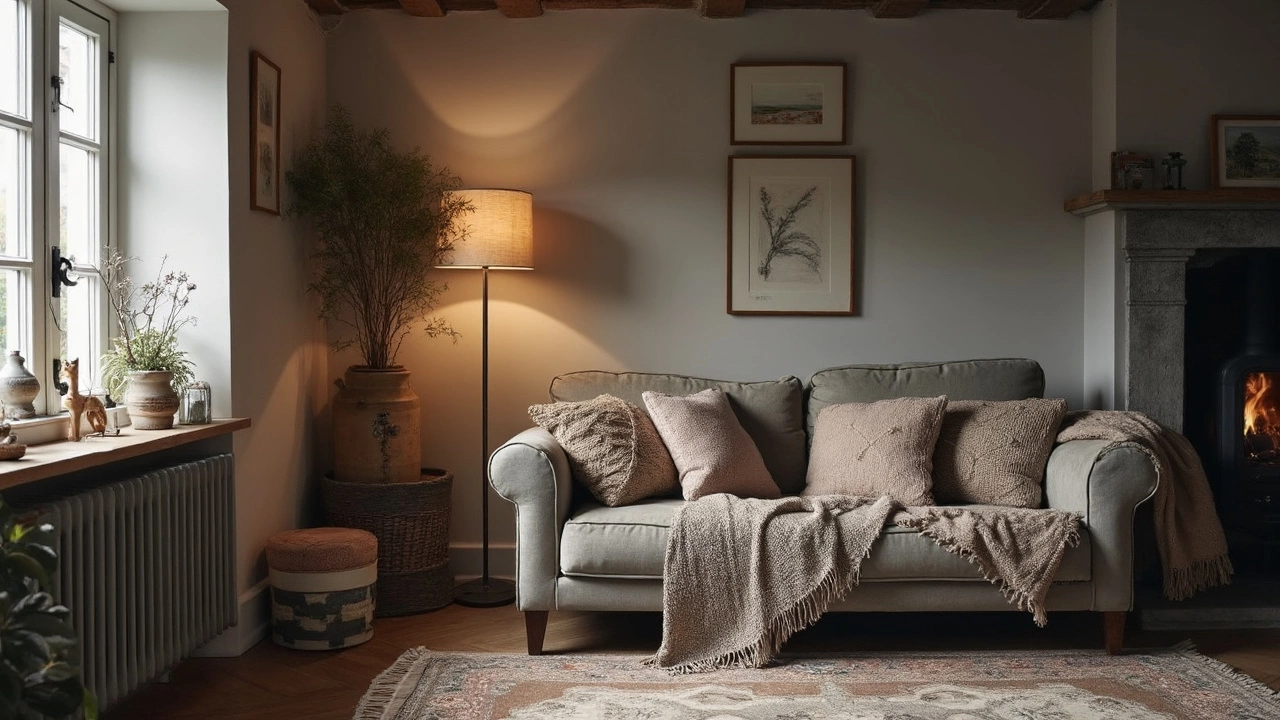
Personal Style and Practicality
Ultimately, whether you choose a sofa that's lighter or darker than your walls boils down to your personal style and practical needs. There are a few factors to consider that can help shape your decision.
The Role of Personal Style
Your home is a reflection of you, so it makes sense that personal taste will play a big role. If your style leans towards minimalism, a lighter sofa with neutral tones might fit right in. On the other hand, if you favor cozy, warm spaces, a darker sofa can contribute to that inviting vibe.
Practical Considerations
Think about your lifestyle. Do you have pets or kids? If so, a darker sofa that hides stains and wear might be more practical. On the other hand, if you've invested in stain-resistant fabric, a lighter sofa can still be a viable option without the constant worry of spills.
Space is another practical factor. A large room may need a darker couch to create a focal point, while a lighter sofa can open up a smaller space.
Mix and Match
If you're on the fence, consider a compromise. Mix and match your choices by using cushions or throws. A darker sofa with brighter accents can break the monotony and add a splash of personality, while a lighter sofa can be grounded with darker pillows or a rug.
Data and Trends
According to a 2023 home decor survey, 51% of homeowners favored lighter sofas due to their versatility, while 39% preferred darker options for their durability. Here's a quick look at the stats:
| Sofa Color | Percentage Preferred |
|---|---|
| Lighter | 51% |
| Darker | 39% |
| Mix and Match | 10% |
In the end, there's no right or wrong answer—just the one that fits your lifestyle and makes you feel at home.
